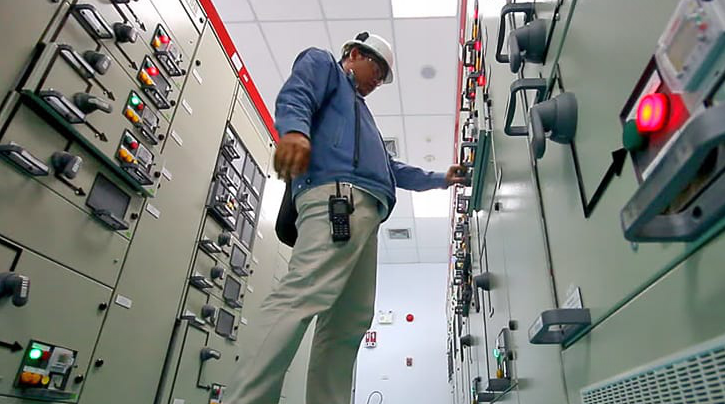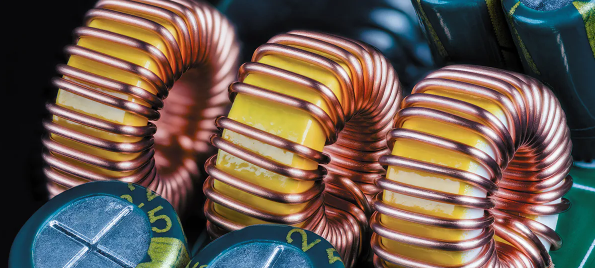Nachrichten
Building a 120V AC to 3V DC Power Supply
Autor: ZYG Leistungsmodul Time: 2023-4-18
Introduction:
A power supply is an essential component in any electrical or electronic system. It provides the necessary power for the system to operate. In this article, we will discuss how to build a 120V AC to 3V DC power supply. The power supply can be used for a variety of applications such as powering low voltage circuits, charging batteries, and powering small electronic devices.
Design:
The power supply is designed to convert the 120V AC voltage from the mains into a 3V DC voltage. The power supply consists of a transformer, a bridge rectifier, and a voltage regulator.
Transformer:
The transformer is used to step down the 120V AC voltage to a lower voltage suitable for the power supply. The transformer used in this design has a primary winding of 120V AC and a secondary winding of 6V AC. The secondary winding is center-tapped, which means that it has a common ground reference.
Bridge Rectifier:
The bridge rectifier is used to convert the AC voltage from the transformer into a DC voltage. The bridge rectifier is made up of four diodes that are arranged in a bridge configuration. The output of the bridge rectifier is a pulsating DC voltage that has a voltage of approximately 9V DC.
Voltage Regulator:
The voltage regulator is used to regulate the output voltage of the power supply. In this design, a LM317 voltage regulator is used. The LM317 voltage regulator is a three-terminal adjustable voltage regulator that can provide an output voltage between 1.25V and 37V. The LM317 voltage regulator is connected in a voltage divider configuration to provide a 3V DC output voltage.
Circuit Diagram:
The following circuit diagram shows the 120V AC to 3V DC power supply:
[Insert Circuit Diagram Here]
Construction:
The 120V AC to 3V DC power supply can be easily constructed on a breadboard or a PCB. The components required for the power supply are:
1. Transformer: 120V AC to 6V AC center-tapped transformer
2. Bridge Rectifier: 4x 1N4007 diodes
3. Voltage Regulator: LM317
4. Capacitors: 1x 2200uF electrolytic capacitor, 1x 0.1uF ceramic capacitor
5. Resistors: 2x 220 ohm resistors, 1x 240 ohm resistor
6. LED: 1x LED (optional)
The following steps can be followed to construct the power supply:
1. Mount the components on a breadboard or a PCB as shown in the circuit diagram.
2. Connect the 120V AC input to the primary winding of the transformer.
3. Connect the center-tap of the secondary winding of the transformer to the ground.
4. Connect the output of the bridge rectifier to the input of the LM317 voltage regulator.
5. Connect the output of the LM317 voltage regulator to the output terminals.
6. Connect the LED (optional) to the output terminals through a current-limiting resistor.
Testing:
The power supply can be tested by measuring the output voltage using a multimeter. The output voltage should be approximately 3V DC. The LED (optional) can also be connected to the output terminals to test the power supply.

Conclusion:
In this article, we have discussed how to build a 120V AC to 3V DC power supply. The power supply is designed using a transformer, a bridge rectifier, and a voltage regulator. The power supply can be used for a variety of applications such as powering low voltage circuits, charging batteries, and powering small electronic devices. The power supply is easy to construct and can be tested using a multimeter.
relevante Information
-
2023-6-15
AC DC Power Supply PFC Series: Ensuring Reliable and Efficient Power Delivery
In today's world, where technology is advancing at an unprecedented pace, the demand for efficient power supply systems has become more critical than ever. The AC DC Power Supply PFC series is one such advanced power supply system that is designed to meet the diverse needs of the modern-day power supply industry. The AC DC Power Supply PFC series is an innovative solution that combines the best of both worlds – it delivers efficient power supply, while also ensuring reliable and consistent power delivery. It is designed to provide high power density and efficiency, making it ideal for a wide range of applications, including industrial, medical, and telecommunication equipment. One of the most significant advantages of the AC DC Power...
Einzelheiten anzeigen -
2023-6-11
Revolutionizing Power Conversion: The Bidirectional Converter
The world we live in today is driven by technology. From mobile devices to electric cars, technology has revolutionized the way we live our lives. One area where technology has made significant strides is in power conversion. Power conversion is the process of converting one form of electrical energy to another. This process is crucial in many applications such as renewable energy systems, electric vehicles, and industrial automation systems. The conventional power converters, however, have limitations in terms of efficiency, cost, and reliability. It is in addressing these limitations that the bidirectional converter has emerged as a game-changer in power conversion. The bidirectional converter is a power converter that can operate in both directions, i.e., it can convert electrical energy...
Einzelheiten anzeigen -
2023-7-5
120V AC to 12V DC Converter: Effortless Voltage Transformation for Your Electrical Needs
Introduction In today's modern world, electricity is an indispensable part of our lives. From powering our homes to running various electrical devices, it plays a crucial role in making our lives convenient and comfortable. However, not all electrical devices operate on the same voltage, which can create a challenge when trying to connect them to a power source. This is where a 120V AC to 12V DC converter comes into play. This device effortlessly transforms voltage, allowing you to meet your electrical needs without any hassle. Understanding the Basics Before delving into the benefits and applications of a 120V AC to 12V DC converter, it is important to understand the basics. AC stands for alternating current, which is the type...
Einzelheiten anzeigen -
2022-4-7
Über die Bedeutung, Struktur und Auswahl des DC-DC-Leistungsmoduls?
Mit der Entwicklung der Zeit werden elektronische Produkte immer weiter entwickelt, DC-DC-Leistungsmodule werden in der heutigen Gesellschaft weit verbreitet verwendet, und einige elektrische Geräte, die im täglichen Leben verwendet werden, werden auch auf sie angewendet. Verstehen Sie die Bedeutung und den Aufbau von DC-DC-Leistungsmodulen? Wissen Sie, warum Sie sich für ein DC-DC-Leistungsmodul entscheiden sollten? Heute nehme ich Sie mit, um es herauszufinden. Die Bedeutung des DC-DC-Leistungsmoduls: Das DC-DC-Leistungsmodul ist ein kompaktes, qualitativ hochwertiges geregeltes Stromversorgungsprodukt, das fortschrittliche Fertigungstechnologie verwendet. Da das Modulnetzteil einfach zu handhaben ist, hat es die Vorteile einer bequemen Erweiterung und einer guten Wartbarkeit bei der Zusammenstellung des Systems. Daher ist es weit verbreitet in der Luft- und Raumfahrt, der Kommunikationsstromversorgung, der Automobilelektronik usw.
Einzelheiten anzeigen -
2024-11-6
DC Power Module: Stable Power Supply, Driving Future Technology
In the rapidly developing field of electronic technology, DC power modules, as the heart of electronic equipment, play an important role. They not only provide stable and reliable DC power to various devices, but also promote the progress and development of modern technology. This article will introduce the working principle, types, applications, and selection points of DC power modules in detail to help you better understand and select this key component. Operating Principle: Precise Conversion, Stable Output The core function of the DC power module is to convert alternating current (AC) into direct current (DC), while achieving precise regulation of voltage and current. This process usually involves rectification, filtering, voltage regulation and other links to ensure that the output DC...
Einzelheiten anzeigen -
2023-5-23
Efficient AC-DC Power Supply for Maximum Performance and Reliability
Introduction In today's world, electronic devices are used more often than ever before. These devices require power to operate, and this power must be supplied in a safe, reliable, and efficient manner. The AC-DC power supply is an essential component that converts the incoming AC voltage to DC voltage, which is used by electronic devices. An efficient AC-DC power supply is necessary to ensure maximum performance and reliability of electronic devices. In this article, we will discuss the importance of an efficient AC-DC power supply and how it can be achieved. Importance of Efficient AC-DC Power Supply Efficiency is an essential factor when it comes to power supplies. An efficient AC-DC power supply is necessary to minimize energy waste and...
Einzelheiten anzeigen


















